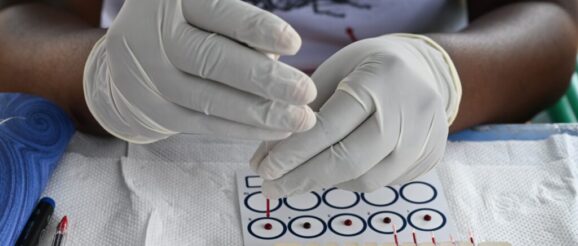Neglected tropical diseases should get Covid-19-like innovation- STAT

With the first results of multiple Covid-19 vaccine candidates giving hope to billions of people around the world, the power of biomedical research has captured the public’s attention. The speed with which it moved to develop vaccines, treatments, and diagnostic tests has been impressive — although equitable access to these innovations is still unsure.
The same kinds of efforts should be deployed for the more than 1 billion people living with so-called neglected tropical diseases.
These illnesses often affect those living in extreme poverty. For many of these deadly and debilitating diseases, there are no vaccines, limited diagnostic technologies, and the treatments can be toxic, ineffective, or simply too expensive. Frontline doctors have had to make do with limited resources and a dearth of health tools.
These ambitious targets present an incredible opportunity to embrace an innovation agenda that supports the development of treatments, vaccines, and diagnostic tools for neglected tropical diseases.
Take, for example, African sleeping sickness, a deadly disease with frightening neuro-psychiatric symptoms. Until about 15 years ago, the only treatment available for the final stage of this disease was based on arsenic and it killed 1 in 20 patients. Doctors were helpless.
But a remarkable partnership between my organization, the Drugs for Neglected Diseases Initiative (DNDi), and the pharmaceutical company Sanofi developed a new generation of treatments for sleeping sickness. In 2018, we introduced the first all-oral treatment for the disease, called fexinidazole. We are now working on a single-dose cure for sleeping sickness.
Thanks to new technologies and the work of national sleeping sickness programs, there are now fewer than 1,000 cases reported a year, down from more than 30,000 two decades ago. Sustained elimination of the disease is now within reach.
Unfortunately, fexinidazole is one of the few exceptions to the rule for most neglected tropical diseases. Many treatments were discovered a half-century ago, or don’t even exist. For Chagas disease, a disease caused by a parasite that slowly kills people, effective treatments exist but they take weeks to complete and sometimes have serious side effects. For patients with the devastating infection known as mycetoma, the only treatment options are lengthy, expensive, and have very limited cure rates.
Even where treatments are effective in preventing disease transmission, innovation is needed to go the last mile in eliminating neglected tropic diseases. The only treatment for river blindness can prevent infection, but it does not kill the adult parasitic worms that cause the disease — treatment must be repeated for more than a decade during the life span of the female adult worm. Current treatments also cause deadly side effects in people infected with another type of worm infection known as Loa loa. Treatments are needed that can cure people with river blindness and are safe to give in areas where both of these diseases are present in Central Africa.
Sign up for First Opinion
A weekly digest of our opinion column, with insight from industry experts.
Despite this innovation gap, there has been tremendous progress since the first road map was launched in 2012. Diseases like Guinea worm are close to eradication, while 40 countries have completely eliminated one or more neglected tropical diseases within their borders. Simple interventions like hand-washing and sanitation have made a big difference.
But as Covid-19 has shown, we cannot rely only on public health measures to eliminate a disease. Innovative tools are needed. How do we do this?
Partnerships are everything — between pharmaceutical companies, nongovernmental organizations, multilateral organizations, and most importantly, affected countries.
The science needs to be led by countries affected by these diseases. The Democratic Republic of Congo led clinical trials for the DNDi/Sanofi sleeping sickness drugs, conducting research in the remote areas where people are at risk of the disease. The Congolese scientists knew what their patients needed, which was essential to the success of the work.
Innovative point-of-care diagnostic technology must be developed for many neglected tropical diseases so people with them can be identified early in the course of the illness. Countries can then introduce new drugs as part of test-and-treat programs.
To make these innovations a reality, there will need to be bold new funding commitments for research and development on neglected tropical diseases, both in countries affected by them and through international sources.
The innovation around Covid-19 has been incredible to watch, and I hope its fruits will benefit people all around the globe. Now is the time to harness this energy and do the same for the billion people affected by neglected tropical diseases.
Nathalie Strub-Wourgaft is the director of neglected tropical diseases at DNDi.
